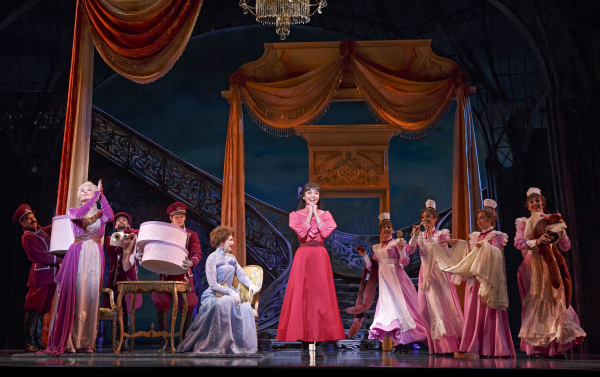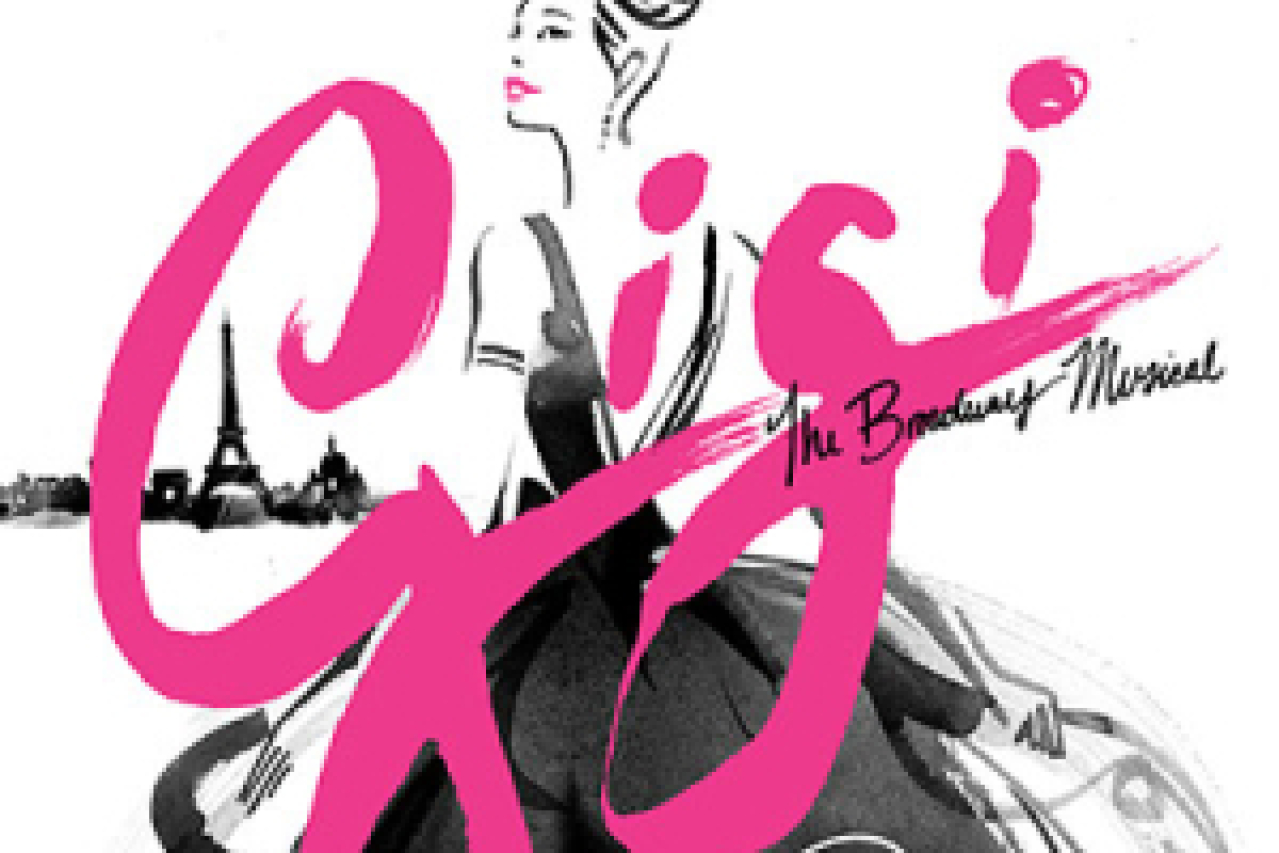Gigi

(© Joan Marcus)
In the panoply of theater and film heroines, Gigi has always been made to stand behind Eliza Doolittle, as No. 2 in the lineup of musical theater's most beloved central characters. Yet with the Kennedy Center's bold new Broadway-bound Gigi, that may change.
The story of a young girl growing up in Paris in the early 1900s, the original Gigi appeared in 1944 as the heroine of a novella by Colette. This Gigi was charming and insouciant, a child being groomed to become a courtesan. The novella inspired various adaptations on stage and screen, including the famous 1958 film with screenplay by Alan Jay Lerner and score by Lerner and Frederick Loewe (the movie won 9 Academy Awards) and the 1973 musical, which won a Tony for Best Original Score.
The Kennedy Center's Gigi has a new book adaptation by Heidi Thomas and uses Lerner and Loewe's music and lyrics to present a fresh look at the girl who grows up to be an intelligent, sensitive, and sexually charged young woman and who knows how to make wise decisions on her own. Thomas deserves much of the credit for this exceptional new Gigi, as does its director, Eric Schaeffer. Together they have created not only a new character in Gigi but also a nuanced interpretation of the influences around her, factors that help shape her identity and create her community.
The musical begins in the Bois de Boulogne with a cheerfully aging Parisian bon vivant, Honoré Lachaille (Howard McGillin) extolling the pleasures of life, while his spoiled nephew, Gaston (Corey Cott), looks at the same landscape and finds everything in it boring. The only things Gaston enjoys are thinking about the future industrial age and visiting with Mamita Alvarez (Victoria Clark) and her bubbly ward, Gigi (Vanessa Hudgens).
After a departure from Paris for several weeks, Gaston returns to find that Gigi has blossomed into a young woman. This realization leads Gaston to ask Gigi to be his mistress, which she reluctantly agrees to. However, over the course of their relationship, she realizes she is falling in love with him. Gaston has a similar realization that leads to him proposing and marrying Gigi.
Hudgens is charming as Gigi. Her voice is a light but powerful soprano, and she seems to have boundless energy, making the most of Joshua Bergasse's inventive choreography. From the beginning, she is credible as a young woman who wants to have happiness, rather than find a wealthy husband.
Cott is superb as Gaston. His role calls for many numbers to be acted, danced, and sung with Hudgens, and they are well matched on every score.
Victoria Clark and Dee Hoty play the two women who are in charge of Gigi's education, her grandmother Mamita Alvarez (Clark) and Aunt Alicia (Hoty), and both actresses are exceptional. Mamita is gentle and concerned for Gigi's soul, while Alicia is more concerned with making sure Gigi can pour a cup of tea without spilling it in the saucer.
This new adaptation of Gigi features four songs written and added to the score by Lerner and Loewe in 1973: "Paris Is Paris Again," "I Never Want to Go Home Again," "The Contract," and "In This Wide, Wide World." And it includes all of the songs from the movie, such as "The Parisians" and "Say a Prayer for Me Tonight."
All the physical elements make the Kennedy Center's Gigi appealing. Derek McLane's clever set features a huge gray wrought-iron structure, reminiscent of the Eiffel Tower, where set pieces are simply flown in and around. The precise dancing of the extraordinary ensemble is highlighted by Natasha Katz's sumptuous lighting design.
Catherine Zuber's costumes begin with quiet, bustled pastel gowns and matching parasols, then explode into purple and magenta dresses for the dancers at Maxim's. Gigi's evolution from girl to young woman is also highlighted through Zuber's creations, starting with her blue schoolgirl dress, then later a form-fitting white gown with black trim, and finally a stunning white evening gown.
What makes this production particularly noteworthy is its willingness to see Gigi as an independent creature, which is a marked divergence from the original plot. Without the slightest bit of preachiness, this Gigi suggests that by not following the usual routine, she and Gaston just might find a world that makes sense for their independent natures, rather than a wonderland where a woman like Gigi is measured only by her jewels and furs.











